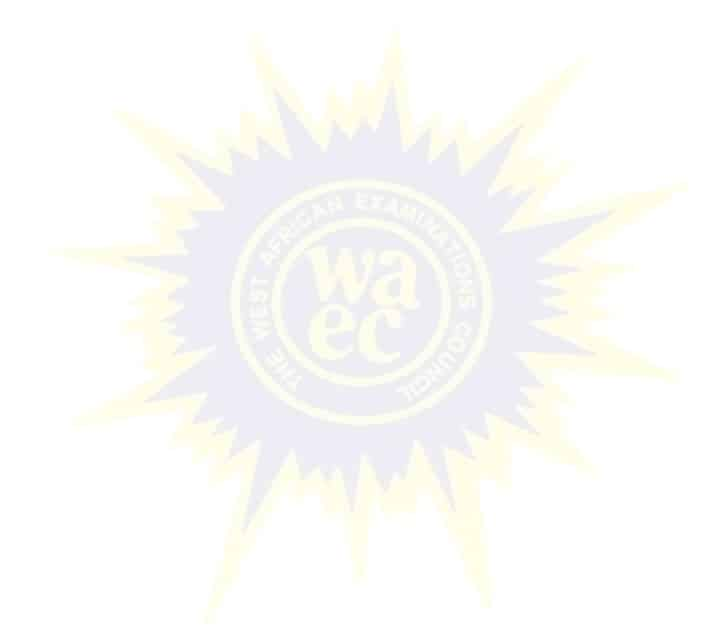
Chemistry
Paper 1 | Objectives | 42 Questions
WASSCE/WAEC MAY/JUNE
Year: 2004
Level: SHS
Time:
Type: Question Paper
Answers provided
FREE
No description provided
Feedbacks
This paper is yet to be rated

Paper 1 | Objectives | 42 Questions
WASSCE/WAEC MAY/JUNE
Year: 2004
Level: SHS
Time:
Type: Question Paper
Answers provided
No description provided
This paper is yet to be rated
DAAD scholarship to assist Sub-Saharan African students fleeing war in Ukraine to complete their studies
These are the best study techniques and methods that get higher grades in any school tests or exams.
The best study methods and strategies and tips for successful exam preparation for good grades
| # | Question | Ans |
|---|---|---|
| 1. |
The mass of an element is 27 and its atomic number is 13. What is the composition of the nucleus of its atom? A. 13 electrons and 14 protons B. 13 neutrons and 14 protons C. 13 protons and 14 neutrons D. 13 electrons and 14 neutrons |
C |
| 2. |
Which of the following electron transition results in the emission of energy? A. 3p to 3s B. 3p to 4p C. 2s to 2p D. 1s to 2s |
A |
| 3. |
Which of the following properties of elements deceases generally across a period in the Periodic Table? A. Electronegativy B. Electron affinity C. Atomic radluc D. lonlzation energy |
C |
| 4. |
Which of the electrons in the following orbitals will experience the greatest nuclear attraction? A. 1s electron of helium B. 1s electron of potassium C. 23 electron of boron D. 2s electron of carbon |
A |
| 5. |
A nuclide emits a beta-particle (e) in the process, that atomic number A. increases by 1 while the mass numer remains constant B. decreases by 2 while the mass number remains constant C. remains constant while the mass number decreases by 2 D. remains constant while the mass number increases by 1 |
A |
| 6. |
One of the characteristics of transition metals is A. reducing ability B. ductility C. ability to conduct electricity D. formation of coloured ions |
D |
| 7. |
A metal X forms two chlorides with the formulae XCI2 and XCI3. Where is X in the Periodic Table? A. Group ll B. Group llI C. d-block D. s-block |
C |
| 8. |
A metal X forms two chlorides with the formulae XCI2 and XCI3. Where is X in the Periodic Table? A. metallic bonding B. ionic bonding C. covalent bonding D. dative bonding |
B |
| 9. |
Which of the following equipment is not used to detect radioactivity? A. Wilson cloud chamber B. Geiger- muller counter C. Mass spectrometer D. Photographic plate |
C |
Preview displays only 9 out of the 42 Questions